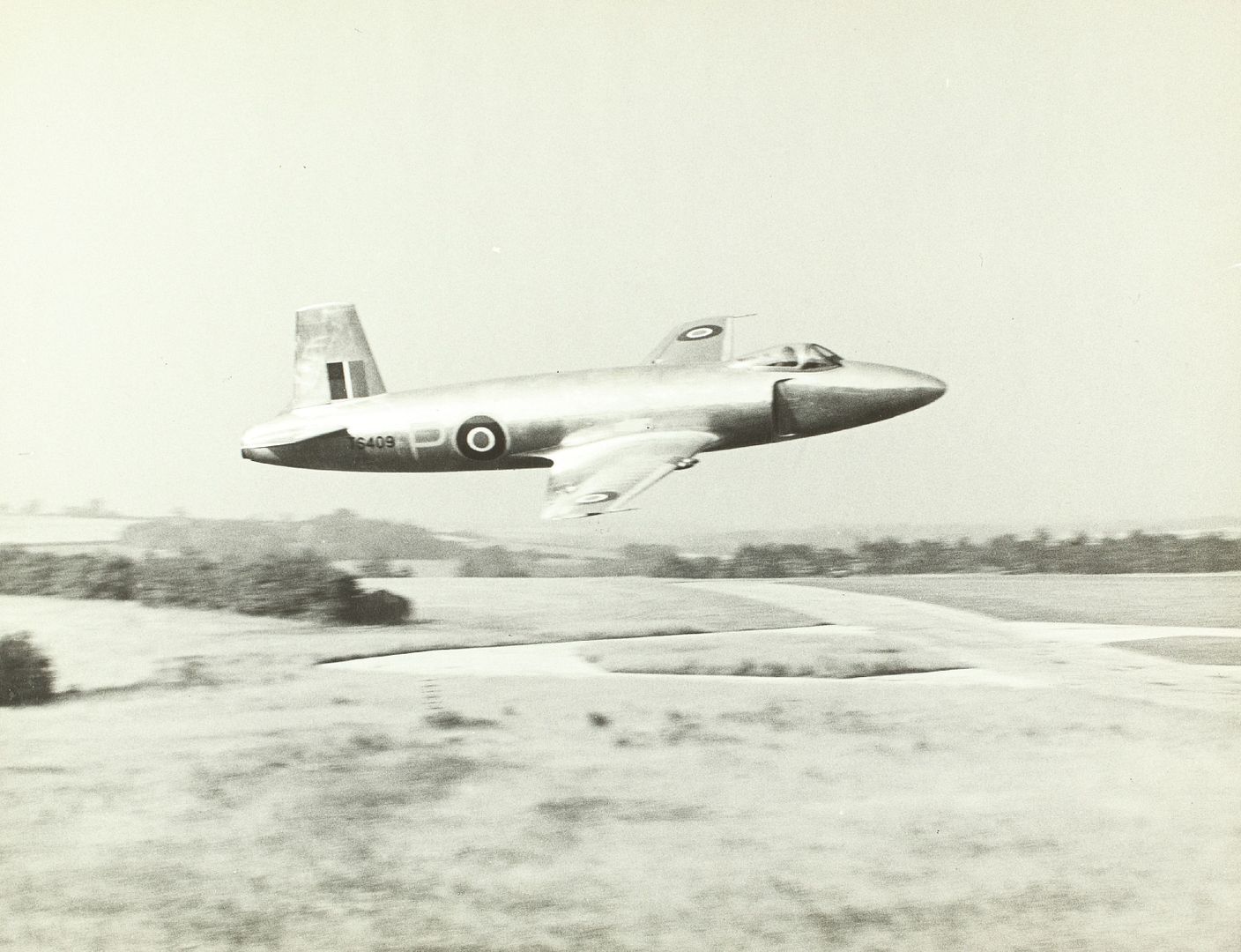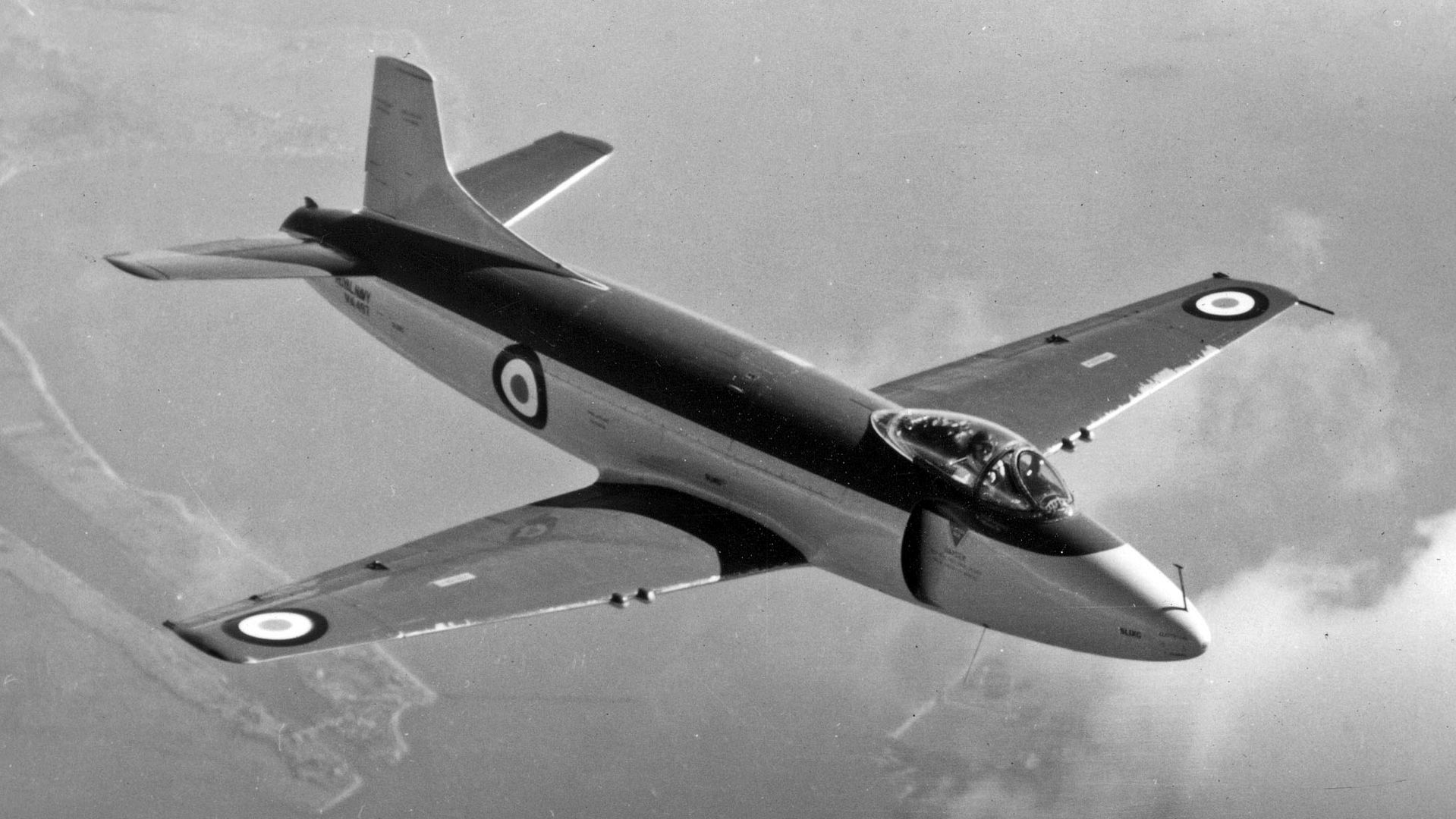Forums
- Forums
- Duggy's Reference Hangar
- RAF Library
- Vickers Supermarine Attacker
Vickers Supermarine Attacker
Post a reply
- Go to Previous topic
- Go to Next topic
- Go to Welcome
- Go to Introduce Yourself
- Go to General Discussion
- Go to Screenshots, Images and Videos
- Go to Off topic
- Go to Works in Progress
- Go to Skinning Tips / Tutorials
- Go to Skin Requests
- Go to IJAAF Library
- Go to Luftwaffe Library
- Go to RAF Library
- Go to USAAF / USN Library
- Go to Misc Library
- Go to The Ops Room
- Go to Made in Germany
- Go to Campaigns and Missions
- Go to Works in Progress
- Go to Juri's Air-Raid Shelter
- Go to Campaigns and Missions
- Go to Works in Progress
- Go to Skinpacks
- Go to External Projects Discussion
- Go to Books & Resources
-
8 years agoSun Aug 31 2025, 08:43amDuggy
 Main AdminIn 1944, the British Ministry of Supply (MoS) issued specification designated E.10/44 for a single-engine jet fighter powered by the Rolls-Royce RB.41 / Nene centrifugal-flow turbojet. A design team at Supermarine led by Joe Smith decided to come up with a design based on the laminar-flow wing and wide-track landing gear of the Supermarine Spiteful -- an enhanced derivative of the famous Spitfire -- with a new fuselage housing the Nene engine.
Main AdminIn 1944, the British Ministry of Supply (MoS) issued specification designated E.10/44 for a single-engine jet fighter powered by the Rolls-Royce RB.41 / Nene centrifugal-flow turbojet. A design team at Supermarine led by Joe Smith decided to come up with a design based on the laminar-flow wing and wide-track landing gear of the Supermarine Spiteful -- an enhanced derivative of the famous Spitfire -- with a new fuselage housing the Nene engine.
Development was approved of the aircraft as the "Type 392 Attacker". The initial prototype, tailcode TS409, performed its initial flight on 27 July 1946, with test pilot Jeffrey Quill at the controls. The machine featured a prototype Nene engine with 19.1 kN (1,950 kgp / 4,300 lbf) thrust, fed by inlets on either side of the cockpit, with the exhaust in the tail. Since the Attacker had a tailwheel landing gear configuration, the exhaust tended to tear up the landing strip, so the tailpipe was canted slightly upward to deflect the exhaust flow, without disturbing flight trim.
The MoS issued a second requirement designated E.1/45 for a carrier-based fighter, and so the next two prototypes were navalized "Type 398" machines, using technology derived from the Seafang, the carrier-based derivative of the Spiteful. The second prototype, tailcode TS413, performed its initial flight on 17 June 1947, with test pilot Mike Lithgow at the controls. It was powered by a Nene 3 / Mark 101 turbojet with 22.7 kN (2,315 kgp / 5,100 lbf) thrust. Unlike the first prototype, it featured a Martin-Baker Mark 1 type ejection seat, plus a yoke-style arresting hook, long-stroke landing gear, attachments for a catapult strop in the wheel wells, provisions for rocket-assisted takeoff gear (RATOG), and lift dumpers / spoilers. The third prototype was build to a similar specification, but had larger and improved engine inlets and the wing moved back 34 centimeters (13.5 inches).
Production of the navalized Attacker was authorized in September 1948, with the first "Attacker Fighter Mark 1 (F.1)" performing its initial flight on 5 May 1950, and the Attacker F.1 entering service with the Royal Navy Fleet Air Arm (FAA) in August 1951. The F.1 featured all straight flight surfaces, with the wings folding upward in the midspan. The main landing gear, with single wheels, retracted upward from the wings toward the fuselage; the tailwheel was retractable. The tailfin had a forward fillet, added after initial prototype flights demonstrated yaw instability. Armament consisted of twin Hispano Mark V 20 millimeter cannon in each wing, for a total of four cannon. A conformal belly fuel tank with a capacity of 1,136.5 liters (300 US gallons) could be fitted. The canopy slid back to open.
A total of 43 F.1s was built, along with 16 "Fighter-Bomber Mark 1s (FB.1s)" that could carry a warload of two 450 kilogram (1,000 pound) bombs or eight "sixty pounder" unguided rockets. They were followed in turn by 84 "Attacker FB.2s" -- much the same as the FB.1 but with a framed instead of clear canopy and the Nene 102 engine, with the same thrust as the Nene 101 but with technical improvements. 36 de-navalized Attackers were built for the Royal Pakistan Air Force as well, giving a total production of 3 + 43 + 16 + 84 + 36 = 182 Attackers, including prototypes.
FAA Attackers were usually painted white, with the tops of the fuselage, wings, and tailplane -- but not the tailfin -- painted dark blue. They remained in first-line service into 1954, being retained for two more years in the Volunteer Reserve. Precise details of the Pakistan Attackers are unclear, but it is said they proved unreliable, though they remained in service until 1960. One Attacker was modified by Handley-Page, using General Aircraft as a subcontractor, for trials of the curved "crescent wing" to be fitted on the Handley-Page Victor jet bomber. The demonstrator flew in 1951; it didn't prove very useful, and worse it broke up in flight after a few months of trials, killing the pilot.
The Attacker was clearly a first-generation jet fighter, being particularly antiquated in terms of its tailwheel landing gear, but its performance was surprisingly better than its stodgy appearance suggested -- Mike Lithgow set a world speed record of 909 KPH (565 MPH) over a 100-kilometer closed course in the Attacker on 27 February 1948. It did give the FAA initial experience in carrier jet fighter operations.









SUPERMARINE ATTACKER FB.2:
_____________________ _________________ _______________________
spec metric english
_____________________ _________________ _______________________
wingspan 11.25 meters 36 feet 11 inches
wing area 21.03 sq_meters 226.4 sq_feet
length 11.43 meters 37 feet 6 inches
height 3.02 meters 9 feet 11 inches
empty weight 4,495 kilograms 9,910 pounds
MTO weight 7,870 kilograms 17,350 pounds
max speed at altitude 865 KPH 540 MPH / 470 KT
max speed at sea level 950 KPH 590 MPH / 515 KT
service ceiling 13,715 meters 45,000 feet
range with belly tank 1,915 kilometers 1,190 MI / 1,035 NMI
Text by Greg Goebel. Thanks.
Post a reply
- Go to Previous topic
- Go to Next topic
- Go to Welcome
- Go to Introduce Yourself
- Go to General Discussion
- Go to Screenshots, Images and Videos
- Go to Off topic
- Go to Works in Progress
- Go to Skinning Tips / Tutorials
- Go to Skin Requests
- Go to IJAAF Library
- Go to Luftwaffe Library
- Go to RAF Library
- Go to USAAF / USN Library
- Go to Misc Library
- Go to The Ops Room
- Go to Made in Germany
- Go to Campaigns and Missions
- Go to Works in Progress
- Go to Juri's Air-Raid Shelter
- Go to Campaigns and Missions
- Go to Works in Progress
- Go to Skinpacks
- Go to External Projects Discussion
- Go to Books & Resources
